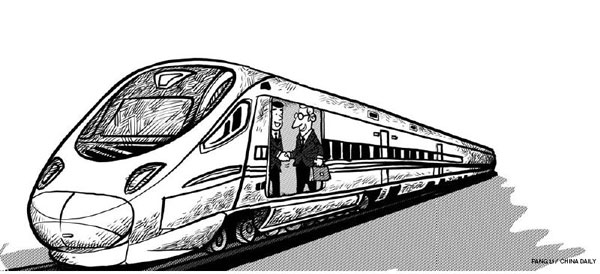China pivotal to Australia's success
Updated: 2012-12-21 07:05
By Tim Harcourt (China Daily)
|
|||||||||||

Nearly half a century ago, Geoffrey Blainey's The Tyranny of Distance argued that Australia's geographic position shaped Australians' psychological attitudes. The long distance between Australia and its colonial forebears in Europe, and also the United States, made Australians unsure of their future economic prosperity.
Around the time Blainey was writing, Donald Horne's The Lucky Country described a resource-rich Australia that lacked intellectual confidence and the capacity to make the most of its natural endowments. Horne said a reluctance to engage with Asia would harm Australia politically, socially and eventually economically. Noting this reluctance, Singapore's former prime minister Lee Kuan Yew famously warned that Australia risked becoming the "poor white trash of Asia" and advised that vast natural mineral wealth was neither necessary nor sufficient for long-term prosperity.
In these years, however, Japan had already succeeded the United Kingdom as Australia's major trading partner, and the Australian economy had begun its long journey toward greater engagement with the Asia-Pacific region. In 1957, just 12 years after the end of World War II, John McEwen, then Australian trade minister, signed a commercial agreement with Japan. This agreement gave Australia a "beachhead" in Asia, and launched the Australian tradition of bipartisan support for increased trade engagement with the region.
There followed a flurry of trade and, later, investment activities between Japan and Australia. Transforming itself from a nation devastated by war into a huge and affluent economy, Japan had surpassed the UK as Australia's trading partner by 1966. And Japan's re-entry into the world economy was followed closely by South Korea and the other "Asian Tigers".
During that time, China remained closed to the rest of the world with little economic engagement outside its borders. Australian relations with China warmed dramatically after Gough Whitlam visited Beijing as leader of the Australian opposition in 1971 and formally established diplomatic relations after being elected Australian prime minister in 1972. This early development and Australia's support for China's entry into the World Trade Organization show that Canberra regards Beijing as a key economic partner. China has now overtaken Japan as Australia's top trading partner.
If the past 40-50 years have been about Japan and the Asian Tigers, the next phase of Australia's engagement in the "Asian century" will be largely about China, followed by India, member states of the Association of Southeast Asian Nations and the economies of emerging Asia.
It is, however, not surprising to see China as Australia's top export destination and source of imports, and a key source of overseas students and tourists. The flow of investment is improving both ways and Australian brands are becoming more widespread in China.
While Australia's large enterprises have already formed strong relationships in Asia, with Rio Tinto, ANZ, BHP Billiton, Rheem, Bluescope, Elders and Woodside being very familiar with the Chinese business landscape, the nature of global supply chains and open regionalism means that Australian small and medium-sized enterprises (SMEs) will become increasingly engaged in overseas trade.
These SMEs are joining global supply chains, engaging in strategic alliances and joint ventures, and setting up franchises across the region. New research by Sensis shows that for Australian SMEs engaged in exports, China is the fifth largest destination - after ASEAN and the traditional English-speaking markets of New Zealand, the United States and the UK.
Related Stories
China's rise dominates Australia's yearly trade roundup 2012-12-21 11:12
Australia's agriculture to benefit from China's boom 2012-12-08 15:53
China becomes Australia's 2nd biggest tourism market 2012-12-05 09:17
China becomes Australia's No 1 knowledge partner 2012-11-26 15:20
Australia keen on China's tourism market 2012-09-21 15:57
Today's Top News
President Xi confident in recovery from quake
H7N9 update: 104 cases, 21 deaths
Telecom workers restore links
Coal mine blast kills 18 in Jilin
Intl scholarship puts China on the map
More bird flu patients discharged
Gold loses sheen, but still a safe bet
US 'turns blind eye to human rights'
Hot Topics
Lunar probe , China growth forecasts, Emission rules get tougher, China seen through 'colored lens', International board,
Editor's Picks

|

|

|

|

|

|





